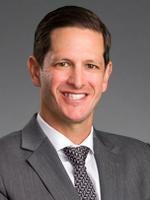Treasury Decisions Could Make or Break OZ For Operating Businesses
Eagerly anticipated proposed regulations addressing the eligibility of operating businesses to qualify for Opportunity Zone (OZ) benefits are in the final stages of review before release by the Department of the Treasury (Treasury). Although October 2018 guidance provided the clarity investors, fund sponsors, and developers on the real estate side needed to move forward, many operating businesses have been waiting until the next round of proposed regulations for similar certainty on their eligibility to take advantage of OZ benefits. Those regulations are expected within the next few weeks and will be the deciding factor on the effectiveness of OZ to incentivize business development in the disadvantaged areas identified as OZs. See our prior alert on the basics of OZs and our alert concerning what the first set of proposed regulations says.
OZ investors can defer paying taxes on capital gains invested in Qualified Opportunity Funds (QOFs) until 2026 with basis step-ups at the 5- and 7-year marks. Capital gains on investments in QOFs held at least ten years are completely free from federal income taxes. Tangible property acquired after December 31, 2017 by the QOF and that is new or substantially improved can be qualifying OZ business property. An equity interest in a qualifying OZ business also can be eligible. With the exception of a select few businesses like liquor stores and massage parlors, an OZ business potentially could be almost any type of active trade or business. Only 70% of the business’s tangible property must meet the preceding tests. Other special rules apply to businesses, including that at least 50% of gross income must be derived from the active conduct of the business, a significant amount of any intangible property held must be used in the business, and less than 5% of assets can be nonqualifying financial property.
In advance of the proposed regulations, this alert identifies many of the questions arising from these additional requirements placed on operating businesses, although several of them apply to real estate, as well. Although we will not know the answers to these questions until the proposed regulations are released, the Trump administration, Treasury officials, and congressional champions of the legislation all have signaled that the rules will be favorable to businesses, likely resulting in a rush of activity for fund formation, investment, and starting up or expanding enterprises in OZs.
Outstanding Questions
- Does the 50% test require at least half of gross receipts to arise from within the OZ or can any percentage of sales be made outside the OZ?
- Will there be minimum requirements of business activity or jobs created within the OZ?
- Will the working capital safe harbor apply to operating businesses?
- Will existing businesses in OZs be able to use OZ benefits to improve or expand?
- How will the “active management” thresholds apply?
- What types of businesses are precluded due to the nonqualified financial property threshold?
- Is a “sin business” only at the retail level or does it apply to manufacturers and wholesalers and suppliers?
- Do state-legal cannabis businesses qualify?
- How will Treasury interpret the many and varied “substantially all” thresholds?
- What constitutes “original use” of property and must it be new property?
- How will vacant land be treated?
- Will leased property be qualified OZ property?
- Can properties or businesses be aggregated for purposes of the substantial improvement test?
- What triggers the beginning of the 30-month period for the substantial improvement test and is it continuous?
- Will the basis rules work the same for OZ as they do for pass-throughs?
- How quickly must a QOF reinvest sale proceeds into qualifying tangible property or a qualified OZ business to remain compliant with the QOF rules?
- Will comingled funds work?
- Do capital gains arising from transactions by the QOF or qualified OZ businesses owned by the QOF stay at the QOF level or do they flow up to the QOF investors (including whether treatment will differ if the asset is held by the QOF for at least ten years)?
- Will a step up in basis be allowable at the QOF level?
- Will investors be forced to exit the QOF to avoid taxation on capital gains after ten years?
- If gains are currently taxable and reinvested in the QOF, does this trigger a new holding period?
- How will depreciation recapture be treated?
- How will QOF investments be treated upon death?
- What constitutes reasonable cause to avoid penalties if the 90% of the test is not met;
- What could trigger an IRS determination that a fund is not a QOF?
- Will accountability reporting requirements measuring dollars invested, jobs created, and other criteria be required?
- What are the tax information reporting requirements?
- What are the IRS penalty procedures?
- What anti-abuse rules will be imposed?
- How will the IRS enforce the OZ program?
Given the pent-up demand for these investment opportunities, we expect that business activity, fund formation, and fund raising will move at a rapid pace once further guidance is issued.





 />i
/>i
